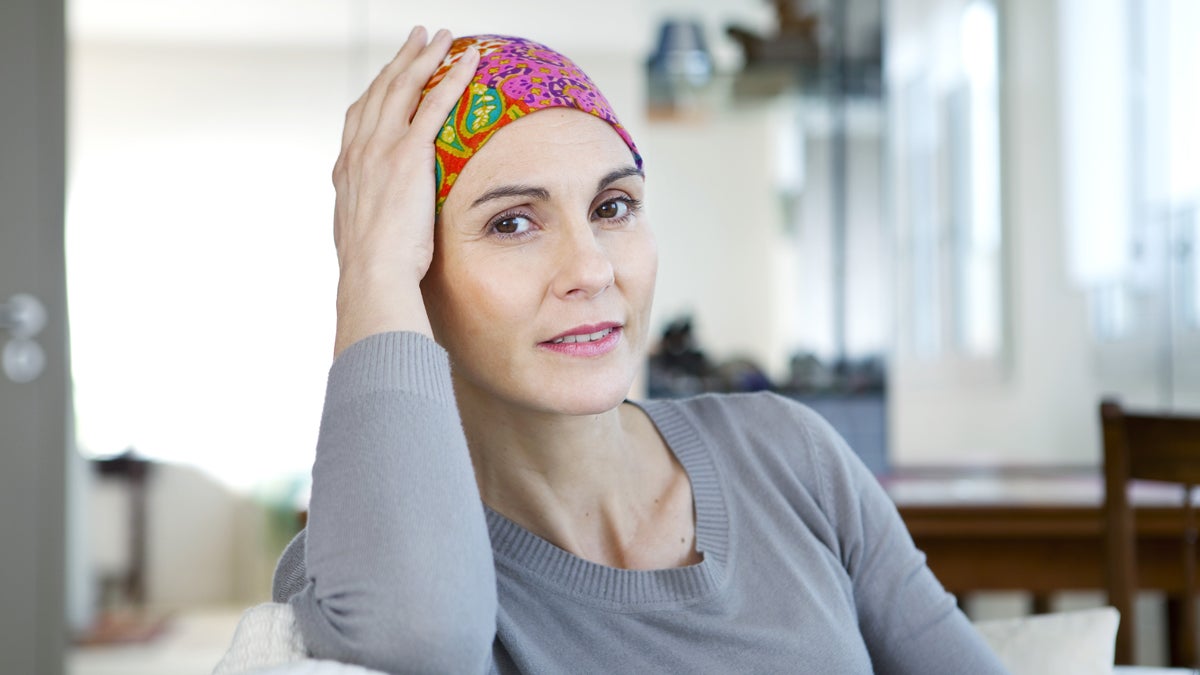More women with early-stage breast cancer deciding on mastectomy
 Photo via ShutterStock) " title="sswomancancerx1200" width="1" height="1"/>
Photo via ShutterStock) " title="sswomancancerx1200" width="1" height="1"/>
An increasing number of women diagnosed with early breast cancer are choosing breast removal — mastectomy –- even though they are eligible for breast-conserving treatment --lumpectomy plus follow-up radiation treatment.(Photo via ShutterStock)
Health researchers are noting a pendulum shift in treatment choices among women diagnosed with early-stage breast cancer.
Reported in the journal JAMA Surgery, a survey of national hospital data points to the change.
An increasing number of women diagnosed with early breast cancer are choosing breast removal — mastectomy –- even though they are eligible for breast-conserving treatment (lumpectomy plus follow-up radiation treatment).
Richard Bleicher, a breast surgeon at Fox Chase Cancer Center, said that, anecdotally, he and colleagues have noticed that trend among patients.
“People believe if they just take off their breast they won’t have to worry about it anymore,” said Bleicher, who was not involved in the JAMA study. “That’s not the case. If it were the case we would take everybody’s breast off at a young age and essentially eradicate the world of breast cancer.”
When a breast is removed, some cells remain under the skin. Even microscopic cells can develop a breast cancer or a recurrence.
Some women mistakenly believe that breast removal completely eliminates the risk of a new breast cancer, Bleicher said.
The study authors note that much of the uptick in mastectomy can be linked to a rise in women deciding on a double-mastectomy after a diagnosis of breast cancer in one breast. According to report to the National Cancer Data Base, in 1998, 5.4 percent of women chose double-mastectomy. By 2011, it was 29.7 percent.
For women with early-stage cancer, Bleicher said, the survival rate is the same for patients who choose a lumpectomy plus radiation — or a mastectomy.
The JAMA study tracks hospital records through 2011. In 2013, actress Angelina Jolie announced she’d had a double mastectomy after learning that she inherited a gene that sharply increases her risk of developing breast and ovarian cancer.
Ever since, some physicians have worried about something dubbed the “Angelina Jolie effect.”
The study authors note: “Patients without an identified high-risk genetic mutation have been found to overestimate their risk of contralateral breast cancer.”
“Whether it’s a superstar like Angelia Jolie or your neighbor down the street, each person’s treatment has to be tailored and individualized, and that’s why discussion with your surgeon and physicians is so very important,” Bleicher said.
Northeast Philadelphia resident Darlene Collins said, ultimately, she had a mastectomy to treat her breast cancer but said she appreciates that her doctor offered her the option of a lumpectomy first.
“I think we need somebody in the community explaining to women about breast cancer and what the outcomes are,” said Collins, 50.
She said the decision needs to between a patient and her doctor.
“Women don’t know they can have an breast implant, people don’t know about lumpectomy,” she said.
WHYY is your source for fact-based, in-depth journalism and information. As a nonprofit organization, we rely on financial support from readers like you. Please give today.

